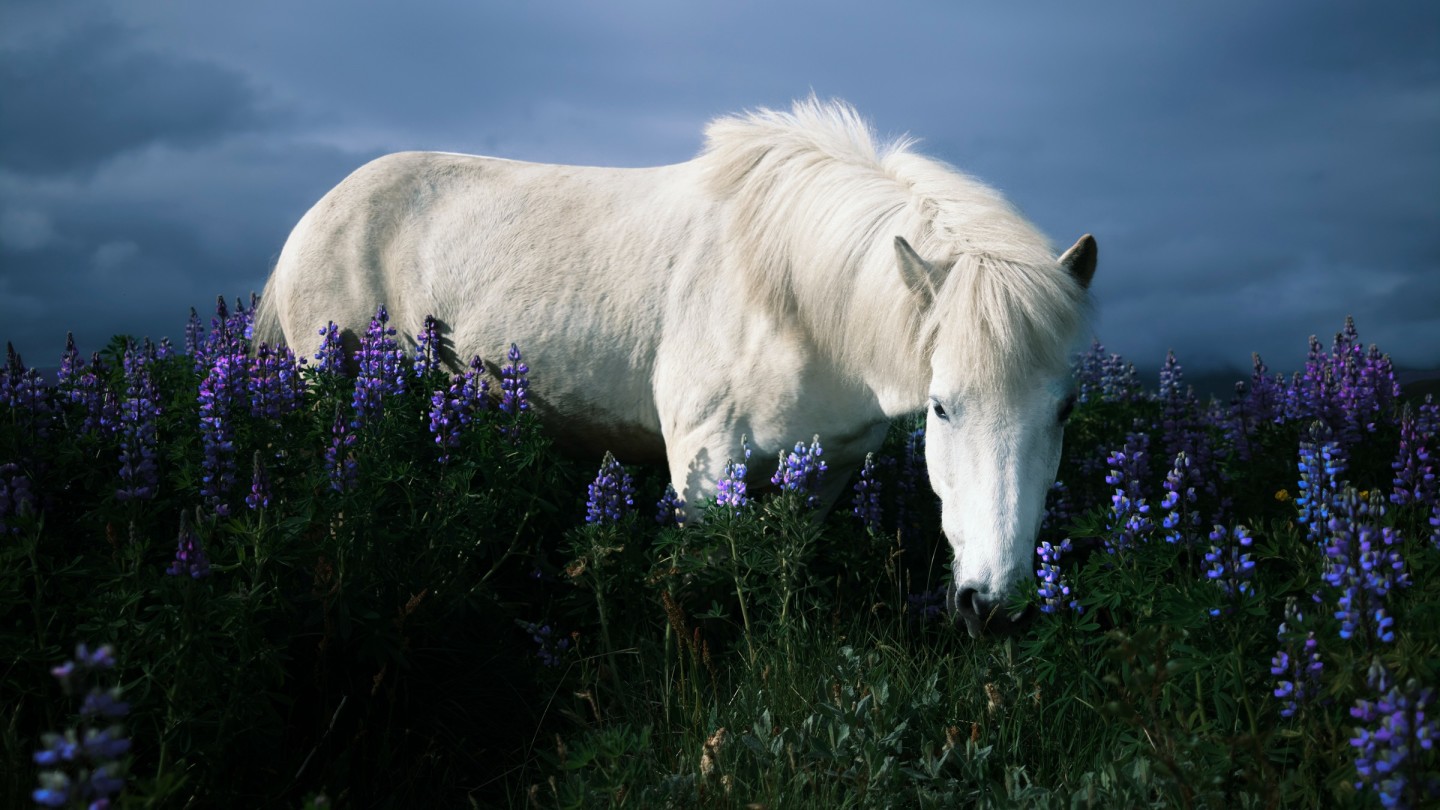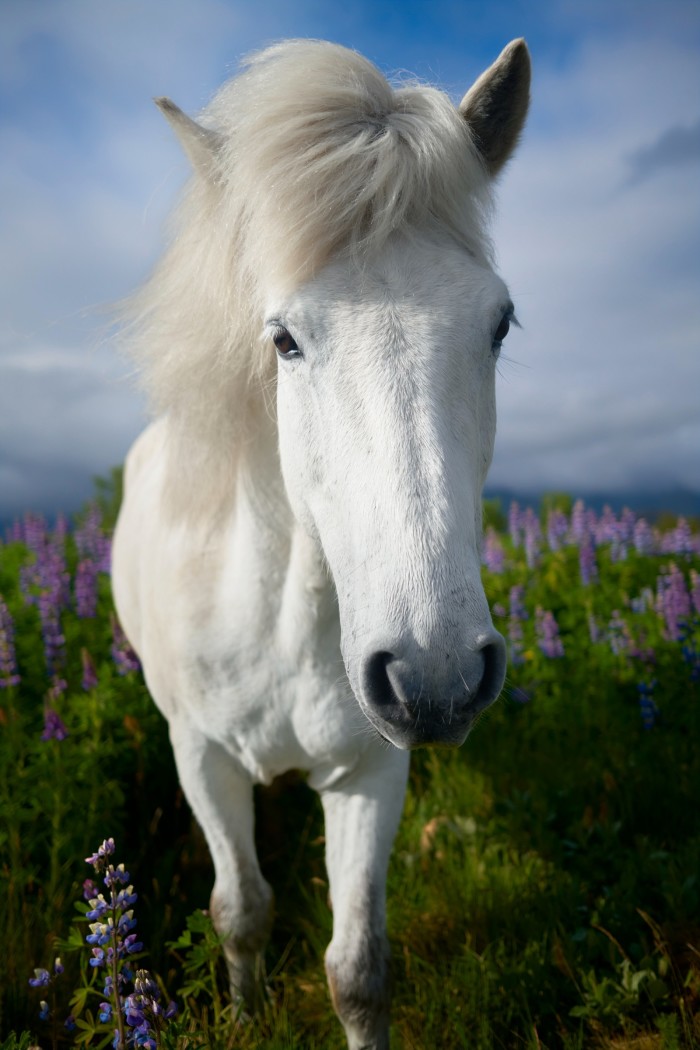How equine-assisted therapy guided me through grief

Roula Khalaf, Editor of the FT, selects her favourite stories in this weekly newsletter.
The gelding and I are facing each other in a large sandy arena in Richmond Park. British-Flemish psychotherapist Professor Dr Andreas Liefooghe asks me to introduce myself to the horse. As I walk towards him, I make clicking sounds and mutter, “Good boy.” I even find myself saying, “Hi, I’m Kate,” although I doubt the task is meant to be that literal.
The horse starts approaching me, and with an outstretched arm I let him smell my hand, pat him on the neck and stroke his face. He then heads towards the gate, and I tag along. He stops, raises his head impressively high, pricks up his ears and looks at something in the distance. I ask Liefooghe, “Does he want to go?” The doctor joins us at the gate and asks if this is a theme in my life. I start nervously spouting a whole lot of stuff about feeling invisible. And suddenly I am sobbing over the death of my father.
Liefooghe set up his organisation Operation Centaur in 2005 to “promote the relevance of the working horse in urban communities” – including one-to-one, couple and group equine-assisted psychotherapy (EAP) programmes to help with issues from grief and anxiety to eating disorders and addiction. EAP has become increasingly popular over the past decade, and last year the first register, Human Equine Interaction Register, was launched in the UK to ensure credibility and high standards of practice. Crucially, one is not required to have had any experience of horses to sign up.
Horses’ nature as prey animals makes them hyper-vigilant, able to detect minute energy vibrations that ripple out to the herd. During sessions, they pick up on and react to non-verbal cues and body language. Clients are encouraged to observe how they affect the horses, while the therapist, to use Liefooghe’s carefully chosen word, “surmises”. When the gelding grabs his halter hanging on the fence with his teeth, for instance, and throws it to the ground, I interpret it as another sign he wants to go, but Liefooghe wonders if he might perhaps want to play. Working through such moments allows me to shake off my “stuckness”, as Liefooghe puts it, and helps me to have the courage to mourn properly, something I have dared not do until now.
This year, the professor is launching Retreat & Conquer, a series of five-day overseas retreats for groups of no more than 12. These are planned for Indonesia (at Nihi resort on Sumba island, where guests can run free with a herd of 27 unhaltered horses and go swimming with them in the sea), Mustique (swimming with horses again), Limpopo in South Africa, and Dubai. In order to join these trips, guests are first assessed for suitability, which means an EAP session such as I am having in Richmond. “We ask people to apply for a place because we want the groups to work,” says Liefooghe. “Sometimes people are very unaware of who they are, and what they bring.” (Gulp.) Liefooghe believes the breaks will help people at a crossroads: “It could be divorce, children leaving for university or parents dying. One of the big things that comes to all of us is loss. And change always has a loss at its heart.”
I had first considered EAP a month before my father died, following a short illness. I’d felt very childlike as he was slipping away, and this had made me think of horses because all I thought about as a child was horses. From the age of five to 16, I pretty much rode whenever I could. I used to wish I could be one (like Queen Elizabeth II, it turns out). Horses make me feel real joy. I love the way they whinny for each other when a herd member is separated in another field – I admire that they can express this need for company so openly and that they often seem to have more empathy than humans.

Back in the arena at Operation Centaur – a week before my father’s military memorial is due to take place – I am still teary. I turn to the horse, who I am convinced wants to go. Liefooghe reassures me: “Horses do in therapy what they have always done for human beings – they speed things up. We would never have got to where we have today after a couple of sessions in a room. But we got there in seven minutes.” He informs me that the horse – who I have nicknamed “Bay”, as he asks clients to do, because their real names might have distracting associations – does not want to go, but instead has chosen to be with me. He points out that the horse approached me first, that we “walked together” – and that now he is nuzzling me, using me as a scratching post, even sharing air with me. These are all signs of affection.
I like Liefooghe’s directness, although it can smart a little. In my second session (of a total of five) he tells me I have been “too intimate too quickly – the horse doesn’t know you very well”. Admittedly, I had tried to cuddle Bay by wrapping my arms around his neck. (“Fifty Shades of Bay,” my husband jokes to me later.)
I wonder if perhaps the horse is grumpy because, as instructed, I have “parked” feelings evoked by certain people in my life, so I am able to navigate my grief more freely. Bay has been expected to “carry” my emotions for a while, which, though wonderfully liberating, ultimately leaves me feeling guilty. Liefooghe says the position of Bay’s ears indicates instead that he is just “listening to us” – and, besides, horses are “beasts of burden”.
Horses are becoming increasingly respected for their ability to foster change in human behaviour. “I started incorporating horses in mental-health sessions because I saw clients transform in a way I had not seen before,” says Lynn Thomas, co-founder of EAP’s largest training organisation, the Equine Assisted Growth and Learning Association (Eagala), who now runs the non-profit Horses for Mental Health. Figures published by Eagala state that, in 2019, 4,764 horses assisted in EAP, helping almost 50,000 people in 40 countries.
The third time I see Liefooghe, he presents a different horse: a beautiful black thoroughbred. Immediately, “Star” starts bucking, rearing and kicking, and then gallops round the arena, whinnying loudly. Liefooghe and I move behind a row of upright jump stands. A call to the groom is made to come to “ground” the horse, and the moment she arrives, Star is calmer. It is decided that therapy will continue back at his stable. First, though, he needs to be walked for 10 minutes to cool off. And it appears I need to be too, as I am taken in a big circle around the entire stable complex. Suddenly, I burst into uncontrollable tears.
In his stable, Star is totally calm. Liefooghe and I talk about anxiety, and how it can help sharpen our awareness, like the flight instinct in horses. But, stresses Liefooghe, “it is all about maintenance”. I have “a way to go” in achieving this, says Liefooghe. But he reassures me that if I can ground myself at a stable door, “as you just did”, then I can ground myself when it comes to grieving.
The therapy is also helping me trust myself more. I find the idea of parking the emotions others provoke in me particularly freeing. And when I’m feeling hurt, I often bring to mind the horses and how instantly they detect any threat to their sense of safety – the rush of adrenaline is this same sort of alert system.
For our penultimate appointment, Liefooghe brings out a small chestnut Arab that he has been working with for 20 years. I am asked to walk “Goldie” towards Liefooghe, who has gone to stand at the other end of the arena. I make clicking sounds and off we go. I am so excited that this is working that I start to overtake him. But then he stops suddenly, swings his neck round and bares his teeth. It startles me – and makes me aware of my tendency to get swept up in the moment.
In our final meeting, Goldie is presented once again. This time he is very friendly and stands right beside me throughout most of the session. Liefooghe shows me how to feel Goldie’s heartbeat, then to drape my arms over the back of the horse to feel his heartbeat close to mine. I have found a stillness.
I have an overwhelming urge now not only to be with horses once more, but to swim with them in Indonesia – and even to ride again, one day.
Before I leave, I ask Liefooghe why he first chose Bay for me, the horse I connected with the most. “Because he’s the nearest we have to a military horse: noble, majestic and wise.” Just like my father…
One-to-one EAP treatment includes an assessment plus six sessions at £395 each; group programmes, £2,995, operationcentaur.com. Overseas retreats, from £4,995, retreatandconquer.com
Comments